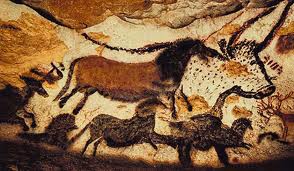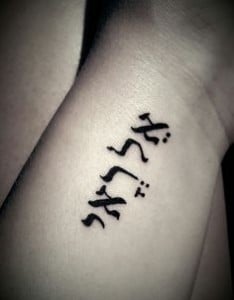Every class is different. You only realize this from experience. Every classroom has its own dynamic, energy and ethos. It really is quite remarkable. This year’s courses have started brilliantly. I don’t know why. It’s not me. But it has made me think more deeply about teaching than I have in the past. And whatever you put time into tends to be where your creative energy is. So, early in this year my energy is in the classroom and I love what I do. So what are my takeaways so far?
1. I’ve become humble. Early on, as a teacher, I received many bouquets, acknowledging my prowess in the classroom. And for a while that continued. Several years ago, I started receiving some nasty feedback from students, really for the first time. It was disturbing. At first I just tried to hide and cover. But then I got curious. I realized, in part, I’d become arrogant, and that I was receiving my comeuppance. It was painful. So I’ve said to my classes this year, “I don’t know what I’m doing. As a teacher, I stand before you realizing in many ways, I don’t really understand how to teach. I am learning, as you are, what it means to teach and to learn, perhaps for the first time. I need your in put.” I have humbled myself. This is not natural to me. Yes, indeed, I am arrogant. But it has worked. It has invited or created a space for students to give input, feedback, to cooperate with me in their learning.
2. We are co-learners. I am not the expert, the one full of knowledge that now dumps his knowledge into student’s minds. I’ve asked my students, at the end of each week, “In what ways can I, your teacher, along with my Teaching Assistants, learn from you about your questions, your conclusions? How can I make the classroom a kind of rolling conversation, where the thoughts, questions and interests of students become a part of a series of learnings?” A large part of this then is reading their feedback. What are they asking? What are they saying? And then responding and when necessary, changing the lecture relative to their interests and questions.
3. Think with me. I started the lecture the other day, and I said instead of scribbling down everything on the power points, just sit back and think with me. Use this classroom as an opportunity to think. I said, “Most of this information can be found in your readings or online. There is nothing magical about information, especially in our time, it’s everywhere—you don’t really need me in this way. But thinking is not something that can be done for you. So use this classroom to think about issues in your life, in our history and in religion.” This invitation then has given me the chance to think out loud with them. For instance, as Rene Girard argues, religion is the rationalization of human violence. And sacrifice is the way religion sacralizes the scapegoating process. The Hebrew Scripture both speaks of the need for sacrifice, but then it questions it as well. Abraham’s arm is held back from Isaac’s neck, and Hosea says the Lord wants “mercy and not sacrifice.” What does this mean? Are the Hebrews being religious or are they opening up a new form of human consciousness?
4. Be producers of knowledge and not consumers. This is tough. Our whole educational system is built on testing for how much knowledge students have consumed. And this can be done by quantifiable means, test taking and the like, and we can grade it and calculate it. And in the end, we can say, look how well our students have consumed knowledge. But maybe, just maybe, that doesn’t mean a damn thing. What if we tested for the ways people produce knowledge rather than how they consume it? What if we tested students on the quality of the questions that they are creating rather than on how much they can mimic the teacher or the books? What if the final exam was giving them two hours to come up with two or three of the most important questions that they have thought about and then answering those questions? You know I haven’t done that yet, but maybe this quarter this will be my final exam!
 5. A place of joy. The experience so far in the classroom this quarter has been one of exquisite joy. I wonder if this is the human mind freed to think. In my case, the joy of my work is the contagious and exhilarating experience of having new ideas pop up in my mind. And if the classroom can be that place where new ideas are allowed to roam, then maybe it becomes a place of pure joy. The scintillating moment when material, energy and a future horizon flame up into a new thought, and sparks then truly do fly. I said to my students in Western Religions, riffing on Jonathan Z. Smith’s thinking–religion is human creativity, a form of human creation, and Judaism, Christianity and Islam are forms of religious innovation. Robert Bellah has recently explained that the origins of religion were in the moment where early humans started “to play.” Roy Rappaport has argued that religion is ritualized “trust.” So the classroom becomes a context for trust, play and pure joy.
5. A place of joy. The experience so far in the classroom this quarter has been one of exquisite joy. I wonder if this is the human mind freed to think. In my case, the joy of my work is the contagious and exhilarating experience of having new ideas pop up in my mind. And if the classroom can be that place where new ideas are allowed to roam, then maybe it becomes a place of pure joy. The scintillating moment when material, energy and a future horizon flame up into a new thought, and sparks then truly do fly. I said to my students in Western Religions, riffing on Jonathan Z. Smith’s thinking–religion is human creativity, a form of human creation, and Judaism, Christianity and Islam are forms of religious innovation. Robert Bellah has recently explained that the origins of religion were in the moment where early humans started “to play.” Roy Rappaport has argued that religion is ritualized “trust.” So the classroom becomes a context for trust, play and pure joy.
Oh my, what a privilege it is then to create in the classroom an atmosphere of trust, play, joy and creativity. This is what it looks like when human beings are fully alive.











